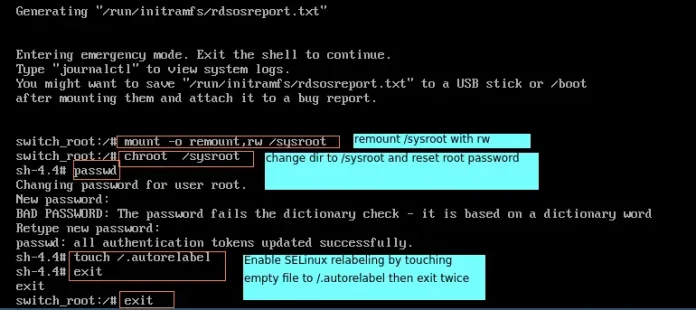Python is one of the most popular programming languages nowadays on account of its code readability and simplicity. All thanks to Guido Van Rossum, its creator.
I’ve compiled a list of 10 interesting Facts in the Python Language. Here they are:
1. There is actually a poem written by Tim Peters named as THE ZEN OF PYTHON which can be read by just writing import this in the interpreter.
Python3
# Try to guess the result before you actually run itimport this |
Output:
The Zen of Python, by Tim Peters Beautiful is better than ugly. Explicit is better than implicit. Simple is better than complex. Complex is better than complicated. Flat is better than nested. Sparse is better than dense. Readability counts. Special cases aren't special enough to break the rules. Although practicality beats purity. Errors should never pass silently. Unless explicitly silenced. In the face of ambiguity, refuse the temptation to guess. There should be one-- and preferably only one --obvious way to do it. Although that way may not be obvious at first unless you're Dutch. Now is better than never. Although never is often better than *right* now. If the implementation is hard to explain, it's a bad idea. If the implementation is easy to explain, it may be a good idea. Namespaces are one honking great idea -- let's do more of those!
2. One can return multiple values in Python. Don’t believe ? See the below code snippet:
Python3
# Multiple Return Values in Python!def func(): return 1, 2, 3, 4, 5one, two, three, four, five = func()print(one, two, three, four, five) |
Output:
(1, 2, 3, 4, 5)
3. One can use an “else” clause with a “for” loop in Python. It’s a special type of syntax that executes only if the for loop exits naturally, without any break statements.
Python3
def func(array): for num in array: if num%2==0: print(num) break # Case1: Break is called, so 'else' wouldn't be executed. else: # Case 2: 'else' executed since break is not called print("No call for Break. Else is executed") print("1st Case:")a = [2]func(a)print("2nd Case:")a = [1]func(a) |
Output:
1st Case: 2 2nd Case: No call for Break. Else is executed
4. In Python, everything is done by reference. It doesn’t support pointers.
5. Function Argument Unpacking is another awesome feature of Python. One can unpack a list or a dictionary as function arguments using * and ** respectively. This is commonly known as the Splat operator. Example here
Python3
def point(x, y): print(x,y)foo_list = (3, 4)bar_dict = {'y': 3, 'x': 2}point(*foo_list) # Unpacking Listspoint(**bar_dict) # Unpacking Dictionaries |
Output:
3 4 2 3
6. Want to find the index inside a for loop? Wrap an iterable with ‘enumerate’ and it will yield the item along with its index. See this code snippet
Python3
# Know the index fastervowels=['a','e','i','o','u']for i, letter in enumerate(vowels): print (i, letter) |
Output:
(0, 'a') (1, 'e') (2, 'i') (3, 'o') (4, 'u')
7. One can chain comparison operators in Python answer= 1<x<10 is executable in Python. More examples here
Python3
# Chaining Comparison Operatorsi = 5;ans = 1 < i < 10print(ans)ans = 10 > i <= 9print(ans)ans = 5 == iprint(ans) |
Output:
True True True
8. We can’t define Infinities right? But wait! Not for Python. See this amazing example
Python3
# Positive Infinityp_infinity = float('Inf')if 99999999999999 > p_infinity: print("The number is greater than Infinity!")else: print("Infinity is greatest")# Negative Infinityn_infinity = float('-Inf')if -99999999999999 < n_infinity: print("The number is lesser than Negative Infinity!")else: print("Negative Infinity is least") |
Output:
Infinity is greatest Negative Infinity is least
9. Instead of building a list with a loop, one can build it more concisely with a list comprehension. See this code for more understanding.
Python3
# Simple List Appenda = []for x in range(0,10): a.append(x)print(a)# List Comprehensionprint([x for x in a]) |
Output:
[0, 1, 2, 3, 4, 5, 6, 7, 8, 9] [0, 1, 2, 3, 4, 5, 6, 7, 8, 9]
10. Finally, Python’s special Slice Operator. It is a way to get items from lists, as well as change them. See this code snippet
Python3
# Slice Operatora = [1,2,3,4,5]print(a[0:2]) # Choose elements [0-2), upper-bound noninclusiveprint(a[0:-1]) # Choose all but the lastprint(a[::-1]) # Reverse the listprint(a[::2]) # Skip by 2print(a[::-2]) # Skip by -2 from the back |
Output:
[1, 2] [1, 2, 3, 4] [5, 4, 3, 2, 1] [1, 3, 5] [5, 3, 1]
This article is contributed by Harshit Gupta. If you like Lazyroar and would like to contribute, you can also write an article and mail your article to contribute@geeksforgeeks.org. See your article appearing on the Lazyroar main page and help other Geeks.
Please write comments if you find anything incorrect, or you want to share more information about the topic discussed above




